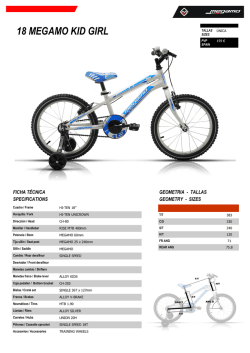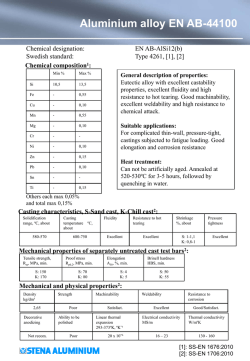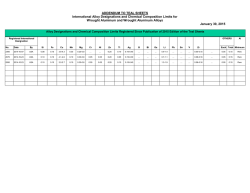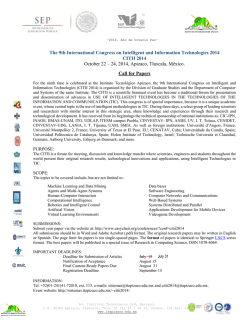
Microstructure Observation and High
China
No. 27, pp.64
-69, (2014)
64 Steel Technical Report,
Microstructure
observation
and high-temperature property of Iron-Nickel-Base Superalloy
Microstructure Observation and High-Temperature
Property of Iron-Nickel-Base Superalloy
MING-YEN LI, SHIH-MING KUO and YEONG-TSUEN PAN
New Materials Research & Development Department
China Steel Corporation
The high-temperature mechanical properties and corresponding microstructure evolution of CSC’s first
iron-nickel-base superalloy product were investigated. The experimental results indicated that at the service
temperature dispersive precipitation of TiC nanoparticles could be promptly brought out of Alloy 800H
when fabricated through a specific production including ingenious alloy design, applicable electro-slag
remelting and high-temperature solution-annealing. TEM observation showed that both the unique TiC and
coexistent M23C6 precipitates are cubo-octahedral in shape and remain the cube-to-cube orientation relationship and coherent {111}carbide/ and {100}carbide/ interphase interface with austenite matrix, which bring about
the dispersion-strengthening effect so that the time to rupture for the present alloy can be increased by 1.8
times in magnitude relative to the commercial heat-resistant product of the same grade. The improved creep
property can be attributed to the mechanism that the nanometer-scale intragranular TiC and submicron intergranular M23C6 act as pinning points for individual dislocations and grain boundaries, resulting in the
raised Orowan strengthening and suppressed grain boundary sliding at high temperature. Since the
mentioned strengthening media are thermally stable and able to emerge readily prior to the formation of ’
phase, this work suggests an improved grade of superalloy for applications in a relatively harsh environment.
Keywords: Iron-nickel-base superalloy, Creep, Microstructure, Alloy 800H, TiC, M23C6
1. INTRODUCTION
Iron-nickel-base superalloy is one of the most
widely used alloys in the energy and petrochemical
industries. Heat-resistant Alloy 800H is the representative grade of iron-nickel-base superalloy, which provides a favorable combination of excellent creep properties, good resistance to high temperature oxidation,
corrosion and carburization, and good structural stability at high temperatures(1). The material hence was recently recommended as a candidate material for the
generation IV nuclear power plants(2), bringing about
more challenging conditions for its high-temperature
applications. Since the creep resistance is the crucial
property for use at temperatures above 593oC, Alloy
800H, containing a minimum 0.05 wt% C content,
must be solution-annealed at a temperature higher than
1121oC to maintain a stable austenitic structure. The
requirements of composition and annealing temperature
promote a large stable grain size (ASTM No.5 or
coarser) for better creep resistance. Beside, after a long
serving time at temperature higher than 550oC, ’ precipitates tend to form due to Al + Ti content of 0.6 to
1.2 wt% in Alloy 800H. These precipitates can further
increase the creep resistance at temperature use up to
760oC. The time-temperature-transformation curves for
the main precipitates in Alloy 800H can be reviewed in
Fig.1.(3) It is suggested, for certain temperature conditions such as at temperature higher than 650oC, a long
incubation period for ’ is needed. In the serving condition of high loading at elevated temperatures, creep
ruptures may occur before the emergence of ’. In this
case, to clarify the creep mechanism and microstructure
evolution for 800H in the relatively harsh conditions
become an important issue. It is worthwhile to build up
a specific process which can bring about an alternative
strengthening effect for extending industrial applications of the iron-nickel-base superalloy.
In this study, we report the high-temperature
mechanical properties and corresponding microstructure
evolution of CSC’s first iron-nickel-base superalloy
product, which suggest a grade-improved Alloy 800H
strengthened by nanometre-scale carbide particles
rather than’precipitates. The material was fabricated
via the specific process so that the creep resistance can
be improved. The creep mechanism of the strengthened
alloy is also discussed.
Ming-Yen Li, Shih-Ming Kuo and Yeong-Tsuen Pan
65
coils, ID# ESR-1 and ESR-2, were solution-annealed
respectively at 1125 to 1160oC and 1160 to 1180oC for
30 min. The as-annealed grain size was measured to be
65 m for ESR-1 and 107 m for ESR-2. The
high-temperature property was examined by the creep
rupture tests at 650 and 705oC under a constant-load
condition, and also by the short-time tensile test at temperatures from 30 to 850oC. The applied load of the rupture test corresponded to the initial tensile stress of 200
and 300 MPa. The test data of the present alloy were
compared with those of the commercial 800H product,
which was produced by a continuous-casting process
with a lower Ti:C ratio of 4.0 to 5.0 (denoted as CC
800H). The morphology of the creep-ruptured samples
were observed by scanning electron microscopy, (SEM,
JEOL JSM-7500F) and the structure and distribution of
the precipitates were analyzed by transmission electron
microscopy (TEM, FEI E.O. Tecnai F20 G2 MAT
S-TWIN).
3. RESULTS AND DISCUSSION
Fig.1. Time-temperature-transformation curves for the
precipitates in Alloy 800H(3).
2. EXPERIMENTAL METHOD
The compositions of the iron-nickel-base superalloy studied were based on Fe-46.5%, Ni-31.4%,
Cr-20.1%, Mn-0.8%, Si-0.24, Cu-0.07%, Al-0.4% and
a designed Ti:C ratio of 6.0 to 7.5(4). The alloys were
prepared by Argon Oxygen Decarburization (AOD) and
then Electro-Slag Remelting (ESR) processes to 5-ton
ingots. Hot forging and hot rolling were performed in
China Steel Corporation’s manufactory to form sheet
coil of 6 mm in thickness. To control grain size, two
Fig.2.
(1) Creep and tensile properties at high temperature
Figure 2 shows the time to rupture of the 800H
samples corresponding to the various creep conditions tested in this study. It can be observed that
creep temperature is a more sensitive factor than
exerting stress on the creep lifetime of alloy 800H,
and controlling the grain size is indeed an effective
method to extend the time-to-rupture only when the
temperature and/or stress conditions are not so
severe. The alloys produced in this study obviously
showed longer creep lives and better ductility than
the commercial 800H product. For the case of
ESR-2 at 650oC, the time to rupture was increased
by 1.8 times in magnitude relative to the commercial creep-resistant product.
Time-to-rupture data for the iron-nickel-base superalloy investigated in this study.
66
Microstructure observation and high-temperature property of Iron-Nickel-Base Superalloy
On the other hand, the result of the tensile test also
demonstrated that ESR-2 provided a superior shorttime mechanical property on both sides of strength
and ductility, as shown in Fig.3. It is leading the
way on the short-time heat-resistant properties
compared to the commercial 800H product at temperatures up to 705oC.
Fig.3. High-temperature tensile test data for the iron-nickelbase superalloy investigated in this study.
(2) SEM observation and creep mechanism
SEM observation on the stressed region of the
stress-ruptured sample is shown in Fig.4, indicating
the intergranular fracture behavior for the creep
failure. Grain growth was not significant for all of
the tested conditions. Increasing the testing stress or
temperature would result in higher crack density
and wider crack width. The precipitates formed at
650oC and 705oC were intragranular sphere-like
TiC (0.1 to 0.5 m in size), blocky TiN (5 to 20 m
in size), and intergranular Cr-rich M23C6 phase.
Besides, it was observed that the twin density in
austenitic structure was apparently increased after
the creep deformation.
Generally, it is known that dislocation glide and
grain boundary sliding lead to creep deformation at
high temperature. Speculated form the SEM microstructure shown in Fig.4, the creep mechanism for
the present alloy can be illustrated as in Fig.5. It is
indicated that dislocations multiply inside austenite
grains and pile up at grain boundaries. As a result,
the cavities at austenite grain triple junctions would
gradually form with the prolonged stress duration.
Under the assistance of stress/thermal activated
grain boundary sliding, the cavities and cracks
become easy to string up with each other and thus
lead to the final rupture. It should be noted that the
sample ESR-2 with larger gain size indeed has a
longer rupture lifetime than the sample ESR-1
(Fig.2), suggesting that the diffusion or Coble creep
may still play a considerable role in the hightemperature deformation.
(a)
(b)
Fig.4. Cross-sectional SEM images for (a) ESR-1 and
(b) ESR-2 800H samples stress rupture-tested by the
conditions noted on the left-hand side.
Ming-Yen Li, Shih-Ming Kuo and Yeong-Tsuen Pan
Fig.5.
67
Schematic diagram (from left to right) for the creep rupture mechanism of the Alloy 800H studied.
(3) TEM analysis and nanoprecipitates strengthening
The creep rupture mechanism revealed in Fig.5
could be evidenced by the TEM observation of
Fig.6, showing that dislocations tend to pile up at
the grain and twin boundaries of austenite matrix
during the stressed exposure at elevated temperatures. It was also observed that a considerable
amount of M23C6 particles can be found at the grain
and twin boundaries when the creep test was performed at 705oC (not shown). At 650oC, M23C6 also
precipitated at dislocation but the particle size is
smaller than those formed at grain boundary
(Fig.7(a to c)). TiC phase, which was distributed
intragranularly, was the main precipitate observed
at 650 oC. The particle size of TiC was around 0.1
to 0.5 m regardless of the creep conditions tested
in this study. Nevertheless, secondary-precipitated
TiC nanoparticles can be found in the austenite
grain for the creep sample ESR-2, which showed
the longest creep life time (Fig.7(d),(e)). HighResolution TEM (HRTEM) analysis showed that
the nano-sized TiC (Fig.8) and coexistent M23C6
(Fig.9) precipitates are both cubo-octahedral in
shape, and remain the cube-to-cube orientation
relationship and coherent {111}carbide/ and {100}carbide/
interphase interface with the austenite matrix.
Analogous phase-transformation scenario of nanosize TiC precipitates cannot be found in the ruptured
sample of the commercial CC 800H product even if
the testing duration was extended over 1500 h for
the low-stress condition (Fig.10). The observations
on the precipitated particles might connect to the
Orowan strengthening effect that the nanometer-scale intragranular TiC(5) and the submicron
intergranular M23C6(6) can respectively act as pinning points for individual dislocations and grain
boundaries, i.e., the enhanced creep resistance of
the ESR 800H produced in this study can be attributed to the raised precipitate strengthening and
suppressed grain boundary sliding. The current
TEM observation also provided the supportive evidence for this kind of interaction between precipitate and dislocation, as shown in Fig.11.
The distinctive size and uniform dispersion of the
carbide particles found in theis study should be related
to the specific fabricating production of the sheet coil.
In the first place, the alloy design for the Ti and C content and Ti:C ratio might had great influence on the precipitation degrees of TiC and M23C6 phases. Besides, the
ESR process with the TiO2-contained slag(7) could not
only help to reduce the burning loss of the beneficial
elements but also promoted the uniform solute distribution for the alloy slabs. In addition, the residual carbides formed during the melting and/or hot-working
processes must be completely resolved by sufficient
temperature/duration of solution-annealing to ensure
the preferable precipitation behavior in service condition.
4. CONCLUSIONS
(1) A grade-improved Fe-Ni-Cr-base superalloy,
strengthened by nanometre-scale carbide particles
rather than’precipitates, is reported in this study.
The experimental results showed that the present
alloy exhibited a time-to-rupture that is increased
by 1.8 times in magnitude relative to the commercial creep-resistant product. Superior short-time
tensile properties on both sides of high-temperature
strength and ductility are also provided by the
present alloy.
Fig.6. TEM BFI (Bright Field Image) of ESR-1 sample
stress rupture-tested with 650oC/300 MPa condition, indicating the dislocations pile up at grain and twin boundaries
of austenite matrix.
68
Microstructure observation and high-temperature property of Iron-Nickel-Base Superalloy
Fig.7. TEM images for sample ESR-2 rupture-tested with 650oC/200 MPa condition, showing the appearance of intragranular
precipitates in austenite grain: (a) BFI, (b) DFI (Dark Field Image) and (c) SADP (Select Area Diffraction Pattern) of M23C6, (d)
DFI and (e) SADP of TiC. The diffraction conditions of the DFI and SADP are noted in each image.
Fig.8. (a) HRTEM, (b) Two-dimensional Fourier transform (FT) and (c) Inverse transform (IFT) images for sample ESR-2
rupture-tested with 650oC/200 MPa condition, showing the TiC nanoprecipitate is cubo-octahedral in shape with cube-to-cube
orientation relationship corresponding to the austenite () matrix. Note the misfit dislocations (T) can be found at the coherent
interphase interface. (b) and (c) were transformed from the square region in (a).
Fig.9. (a) HRTEM image and (b) Corresponding SADP (Z=[110]M23C6) of ESR-2 sample stress rupture-tested with 650oC/
200 MPa condition, showing the M23C6 precipitated at the (1ī1) twin boundary, maintaining the twinning symmetry and the
coherent interphase interface with matrix.
69
Ming-Yen Li, Shih-Ming Kuo and Yeong-Tsuen Pan
Fig.10. TEM images of C C 800H sample stress rupture-tested with 650oC/100 MPa condition, showing TiC is rarely found and
the intragranular M23C6 and ’ are the main precipitated phases for creep lifetime longer than 1500 h: (a) BFI, (b) DFI of M23C6,
(c) DFI of ’ and (d) SADP corresponding to (a)-(c), indicating the coexistent diffraction spots of M23C6, ’ and austenite matrix
(). The diffraction conditions of the DFI and SADP are noted in each image.
TiC and the submicron M23C6 act as pinning points
for individual dislocations and grain boundaries,
respectively.
(3) The particular microstructure evolution of present
material occurring during creep can be connected to
the specific production processes of alloy design,
ESR and solution anneal developed in this study.
REFERENCES
Fig.11. HRTEM image (Z=[110]ppt.//) of ESR-2 800H
sample stress rupture-tested with 650oC/200 MPa condition, indicating the dislocations in were locally bent due
to hindering of precipitates (denoted as ppt.).
(2) TEM observation on the stress-ruptured samples of
the superalloy showed that both the TiC and M23C6
precipitates are cubo-octahedral in shape and
remain the cube-to-cube orientation relationship
and coherent {111}carbide/ and {100}carbide/ interphase interface corresponding to the austenite
matrix. The improved properties can thus be attributed to the mechanism that the nanometer-scale
1. W. Betteridge, R. Krefeld, H. Krockel, S. J. Lloyd
and M. Van de Voorde, in Alloy 800, edited by C. Vivante (North Holland Publishing, New York, 1978).
2. W. Ren, in A Review of Alloy 800H for Applications in the Gen IV Nuclear Energy Systems,
PVP2010-25727, Bellevue Washington (2010).
3. W. B. Jones and R. M. Allen, Met. Trans. A, 13,
637 (1982).
4. M. Y. Li, Y. T. Pan, I. T. Hong and S. M. Kuo, Proceedings of the 2012 Annual Conference of the
Materials Research Society-Taiwan, Yunlin, Taiwan,
Nov. 23-24th, 2012, pp. 2631-2634.
5. M. Taneike, F. Abe and K. Sawada, Nature, 424,
294 (2003).
6. A. Orlová, K. Milička and J. Čadek, Mat. Sci. Eng.
A, 50, 221 (1981) and references cited therein.
7. C. Y. Chen et al, Internal Report TS-101001 in
China Steel Corporation, 2012.
□
© Copyright 2026







